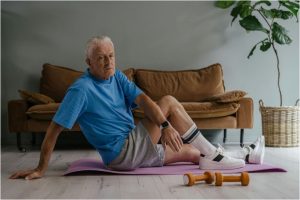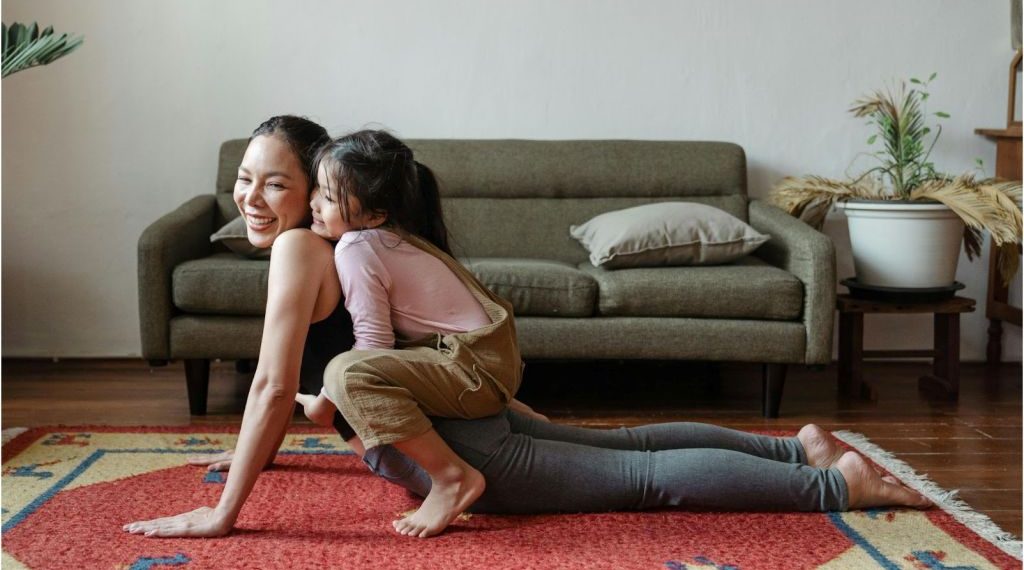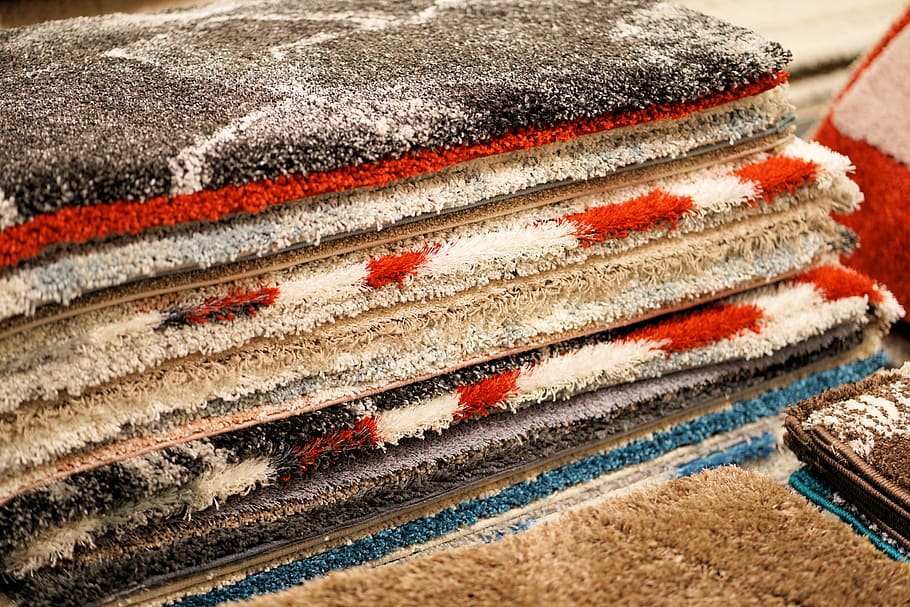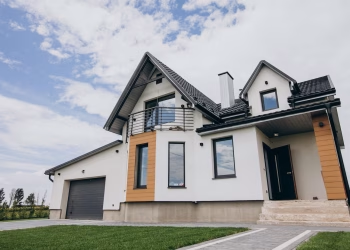Dumbbell leg workouts are a fantastic way to sculpt and tone your muscles right in the comfort of your home. They offer an inviting and effective approach to strength training without the need for a gym. One of the main reasons these workouts are so beneficial is their ability to build strength and endurance. Let’s explore why these workouts are a smart choice for anyone looking to enhance their leg strength.
Benefits of Leg Workouts at Home
Conducting leg workouts at home presents numerous advantages:
- Cost-effectiveness: Forget about expensive gym memberships. All you need is a pair of dumbbells, making it a budget-friendly option.
- Convenience: Workout whenever it suits your schedule. No need to fit in gym times; you have the flexibility to exercise in your own home.
- Privacy: Some people feel more comfortable exercising at home rather than in front of others at the gym.
- Varied Exercises: Dumbbells are incredibly versatile, allowing you to perform a wide range of exercises with just one piece of equipment.
- Consistency and Motivation: Maintaining a consistent workout routine is often easier at home, where distractions are fewer. Exploring the advantages of exercising at home can highlight the flexibility and convenience it offers for maintaining a fitness routine.
Working out at home might be the push you need to stay committed to your fitness journey. It encourages consistency and removes excuses, making it easier to achieve your fitness goals.
Essential Equipment for Dumbbell Leg Exercises
To start your dumbbell leg workout at home, you don’t need a lot of equipment. Here’s what you should have:
- Dumbbells: These are versatile and can be used for a variety of exercises. Choose a weight that you can handle comfortably while still challenging your muscles. Generally, starting with 5-15 pounds is great for beginners.
- Yoga Mat: Provides comfort while doing floor exercises and helps prevent slips.
- Bench or Chair: Useful for exercises like step-ups or modified lunges.
When choosing dumbbells:
- Ensure they have a good grip to avoid slipping.
- Consider adjustable dumbbells if you want the ability to quickly change weights without needing multiple pairs.
Comprehensive guides on home workout essentials can provide detailed advice for choosing the right equipment for your fitness needs and space
Top Dumbbell Leg Exercises
When prepping for your dumbbell leg workout, focus on exercises that hit all major muscles. Here are some effective ones to get you started:
Squats with Dumbbells
Squats are critical for strengthening your thighs and glutes. Here’s how to do them:
- Stand with feet shoulder-width apart, holding a dumbbell in each hand by your sides.
- Lower your body as if sitting back in a chair, keeping your back straight and knees over your toes.
- Stop when your thighs are parallel to the floor, then push back up to the starting position.
Benefits of squats include improved lower body strength and muscle tone. Guidance on maintaining correct form during exercise can be found in resources that focus on fitness and health. These resources often provide valuable tips for performing exercises safely and effectively.
Lunges with Dumbbells
Lunges target the hamstrings and glutes, helping improve your balance and coordination:
- Stand upright with a dumbbell in each hand.
- Step forward with one leg, lowering your hips until both knees are at about a 90-degree angle.
- Push back up to the starting position and switch legs.
To avoid injury, ensure your front knee doesn’t extend over your toes. Exercise variations can be found in resources, allowing people of different fitness levels to participate.
Calf Raises with Dumbbells
Calf raises strengthen the lower legs and improve balance. Here’s how to perform them:
- Stand upright with a dumbbell in each hand.
- Lift your heels off the ground, balancing on the balls of your feet.
- Hold for a second, then lower back down.
For added difficulty, try standing on a step or adding extra weight. Using progressive overload can enhance effectiveness. These exercises form the backbone of a strong dumbbell leg workout at home, providing a comprehensive approach to improving both strength and endurance.

Structuring a Leg Workout at Home
Designing a leg workout at home using dumbbells can be both simple and effective. Here’s how you can structure your session:
Sample Workout Plan
- Warm-Up (5-10 minutes)
- Gentle jogging in place
- Leg swings
- Dynamic stretches like lunges with a twist
- Dumbbell Exercises
- Squats with Dumbbells
- Sets: 3
- Reps: 10-12
- Lunges with Dumbbells
- Sets: 3
- Reps: 10 per leg
- Calf Raises with Dumbbells
- Sets: 3
- Reps: 15
- Squats with Dumbbells
- Cool Down (5 minutes)
- Static stretches focusing on legs
- Deep breathing exercises
Set-Rep Variations
- Beginners:
- Start with 2 sets of 8-10 reps.
- Use lighter weights until you perfect your form.
- Intermediate:
- Aim for 3 sets of 10-12 reps.
- Experiment with moderate weights to increase resistance.
- Advanced:
- Perform 4 sets of 12-15 reps.
- Gradually increase dumbbell weight for more challenge.
Including a proper warm-up and cool-down can help prevent injuries and enhance workout efficiency. You can refer to ACE Fitness for a structured workout guide to ensure comprehensive leg training.
Safety Tips and Common Mistakes
To get the most out of your dumbbell leg workout while ensuring safety, keep the following tips in mind:
Safety Precautions
- Check Your Surroundings: Ensure enough space to move freely with your dumbbells.
- Proper Posture: Keep your back straight and engage your core to prevent strain.
- Controlled Movements: Avoid fast, jerky actions. Perform exercises slowly to maintain control.
Common Mistakes to Avoid
- Knee Alignment: Don’t let your knees extend past your toes during squats and lunges.
- Lifting Too Heavy: Start with a manageable weight to focus on form, then increase gradually.
- Ignoring Fatigue: Listen to your body. If tired, take longer breaks or scale back on weight and intensity.
Keeping these points in mind can significantly reduce the risk of injury. More comprehensive safety guidelines can be found at Health.gov.
By structuring your dumbbell leg workout with these sections, you can ensure a balanced routine that’s both effective and safe. Remember that consistency and correct form are key to seeing progress over time.
Stay Motivated and Track Progress
Maintaining your workout motivation at home can sometimes be challenging, but there are strategies to keep you on track:
- Set Clear Goals: Define what you want to achieve with your dumbbell leg workout, whether it’s building muscle, increasing strength, or toning up.
- Track Your Progress: Use apps or journals to document your workouts, sets, and repetitions. Regular tracking can show you how much you’ve improved, providing a confidence boost. Check out guidance on tracking fitness goals on WebMD.
- Create a Routine and Stay Positive: Establish a regular workout schedule that fits your lifestyle, ensuring it becomes a habit. Celebrate small victories and stay focused on your long-term vision.
- Find a Workout Buddy: Even if it’s virtual, having someone to share your journey with can keep you accountable and motivated.
Remember that consistency is key, and finding ways to stay motivated is crucial for long-term success.
Transform Your Home Workout Routine with Dumbbells
Stepping up your home workout with dumbbells adds simplicity and efficiency while delivering excellent results. Here’s a quick summary of why you should embrace dumbbell leg workouts:
- Versatility: Dumbbells allow for a wide range of exercises targeting different muscle groups.
- Convenience: Exercise anytime without the need for a gym membership.
- Effectiveness: With just a set of dumbbells, you can achieve significant improvements in leg strength and muscle definition.
By incorporating these simple but effective exercises, you enhance your leg strength and overall fitness. Consider integrating these workouts to enjoy the benefits of stronger, toned legs. If you’re looking for ways to enhance your dumbbell workouts, explore the options and products available that align with your needs.
Celebrating small wins and remembering why you started can make all the difference in staying committed to your leg workout at home.







